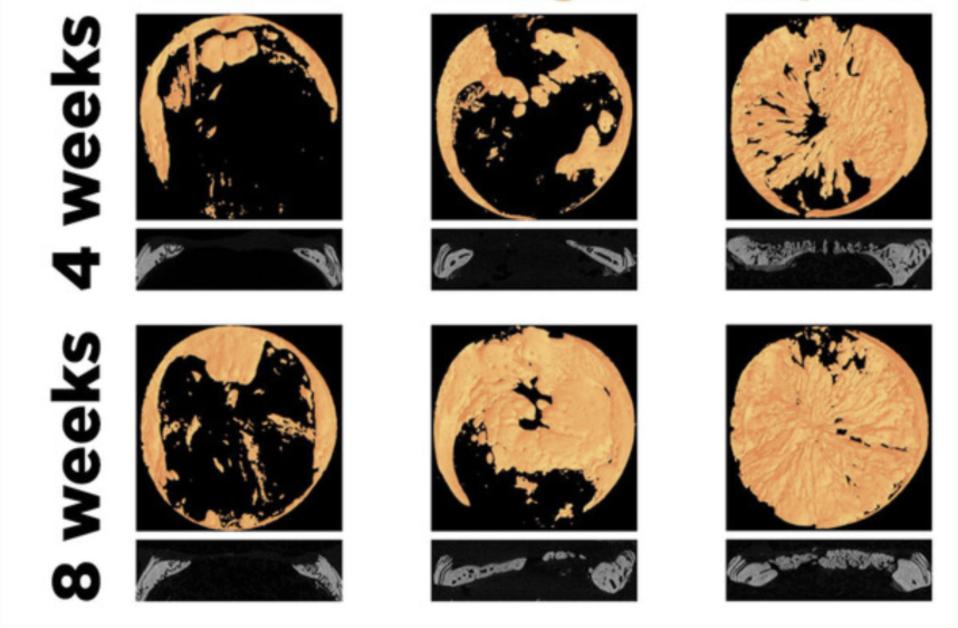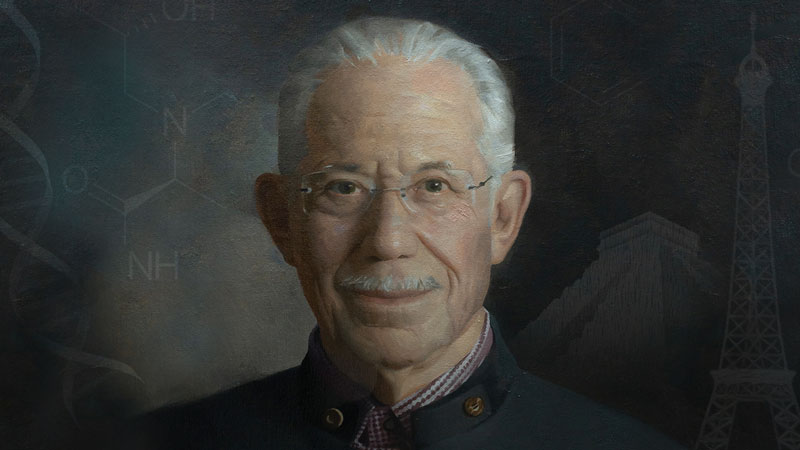Nanomaterial Shows Promise For Bone Regeneration
(Posted on Thursday, August 19, 2021)

MIDDLE EAST – DECEMBER 18: This skull, excavated from Jericho in Palestine, shows four trepanned holes. Trepanning was the ancient practice of cutting holes in the skull, probably with the intention of releasing evil spirits or demons from the mind,
SSPL VIA GETTY IMAGES
The restoration of skeletal function remains an important challenge in a wide range of fields including orthopedics, neurosurgery, and dentistry. Over two million bone graft procedures are performed annually, with five hundred thousand in the United States alone. Despite advances in bone regeneration over the last twenty years, there is a need for a new material that encourages natural replacement without the addition of living cells and other growth factors. The new material must also include biodegradable properties so the body can heal and restore itself in order to limit post-surgical complications. Researchers at the University of Nebraska-Lincoln recently described in a new material that may prove to be effective for bone repair that requires either added cells or growth factors.
Two forms of the new material were compared that differ in the alignment of tiny channels through which cells may migrate.

Figure 1: Schematic illustration of the development of placement of RAS (horizontal) and VAS (vertical) from the center the edge of the scaffold. Categories are broken into four groups, one being closest to the center and four being the edge of the
SCIENCE ADVANCES: BIOMATERIALS WITH STRUCTURAL HIERARCHY AND CONTROLLED 3D NANOTOPOGRAPHY GUIDE ENDOGENOUS BONE REGENERATION

Figure 2: This figure shows the top view and side view of the RAS (horizontal) and VAS (vertical) positioning of fibers. Length is indicated with arrows and is measured in micrometers. One micrometer is equivalent to 1e-6 meters in length. The scale
SCIENCE ADVANCES: BIOMATERIALS WITH STRUCTURAL HIERARCHY AND CONTROLLED 3D NANOTOPOGRAPHY GUIDE ENDOGENOUS BONE REGENERATION
In one form, the channels are aligned horizontally with respect to the bone lesion. In the other, the channels are assigned vertically. The fibers are made from a biodegradable polyester coated with gelatin to promote gradual reabsorption of bone in eighteen to twenty-four months.
The fundamental experiment in this study explores whether horizontal or vertical alignment of fibers is best for bone regeneration. In general, both forms of positioning allow for cells to properly migrate and deposit collagen as needed. Both placement techniques regenerated bone superior to that of the control hydrogel used in this experiment.

Figure 3: This figure is a CT scan of the front and back of the regenerated cranial bone four weeks and eight weeks after implantation of the 3-D model. Collagen and control groups were also used for comparison. The 3-D implant shows clear signs of
SCIENCE ADVANCES: BIOMATERIALS WITH STRUCTURAL HIERARCHY AND CONTROLLED 3D NANOTOPOGRAPHY GUIDE ENDOGENOUS BONE REGENERATION
Both also led to the formation of a bilayer of highly calcified bone surrounding a spongy interior. To the researcher’s surprise, however, the vertically aligned fibers were more durable than the horizontal fibers. See below Figure 4, 5, and 6.

Figure 4: This image illustrates the implantation of RAS (horizontal) and VAS (vertical) fibers in rats with cranial bone defects.
SCIENCE ADVANCES: BIOMATERIALS WITH STRUCTURAL HIERARCHY AND CONTROLLED 3D NANOTOPOGRAPHY GUIDE ENDOGENOUS BONE REGENERATION

Figure 5: This image shows a horizontal tissue slice following treatment and featuring macrostructures of minerals in healthy cranial bone, the control, RAS (horizontal), VAS (vertical), and collagen groups.
SCIENCE ADVANCES: BIOMATERIALS WITH STRUCTURAL HIERARCHY AND CONTROLLED 3D NANOTOPOGRAPHY GUIDE ENDOGENOUS BONE REGENERATION

Figure 6: This image illustrates the cross section of cranial bone placement in the rats used in this experiment. Here you can see the developing structure of bone layers- compact and spongy- and the density of porous bone from top to bottom in RAS
SCIENCE ADVANCES: BIOMATERIALS WITH STRUCTURAL HIERARCHY AND CONTROLLED 3D NANOTOPOGRAPHY GUIDE ENDOGENOUS BONE REGENERATION
The researchers are now planning to test their material on larger bone lesions. Lead researcher on the project, Jingwei Xie, stated, “We’re still trying to optimize the structure. Right now, it can enhance bone regeneration, but I think we still can improve it in certain ways.” Dr. Xie also plans to test their implants on the repair of the femur, tibia, and clavicle.

